Yes, dear readers, I have indeed lived at Ickworth — that is, I’ve stayed at the hotel in one wing of the estate — for a few days. Victoria here, with a few words about this amazing National Trust property which houses a family hotel as well as the handsomely maintained State Rooms in the Rotunda and a fine park. And there are some fascinating characters and family stories (even scandals) to go along with your tour.
This east wing of Ickworth houses the hotel, which has a website here. I wish we could have stayed longer because the amenities were excellent, the food delicious, and for ambiance, it excelled! I should point out that my photo was taken from behind the buildings. The other wing, the West Wing, has been developed for conferences, weddings and other events. The east wing was first used as the Hervey family residence. The west wing was empty, built only for the symmetry of the architecture. For a time, it was used as a conservatory.
This is the entrance to the rotunda, the galleries and rooms housing the NT collections. The Hervey family lived at the Ickworth estate for centuries, though this building was not completed until the 19th century.
Not far from this lonely sheep there is a walled garden, now a vineyard. Here is more information on their output. It is very tasty.
Ickworth as it stands today was the creation of an eccentric and passionate collector, the Earl Bishop, as he is popularly known. Frederick Augustus Hervey (1739-1803) was a younger son but succeeded to the title of 4th Earl of Bristol, following two of his brothers. Though he had originally chosen a legal career, he took orders and was eventually named Bishop of Cloyne (1767) and of Derry (1768) in Ireland. He grew rich on the proceeds of this and other offices and built a great house in Ballyscullion, which he had designed by Mario Aspucci, an Italian architect, for throughout his life the Earl Bishop traveled and collected in Italy, hoping to furnish his magnificent houses with the finest art and furnishings. He was partial to the rotunda style of building in the great Roman tradition.
Above is a drawing of the house at Ballyscullion. It did not last long, for it was demolished in the early 19th century, never completely finished and already deteriorating. However, the handsome portico was saved and can be seen today as part of St.George’s Church, Belfast. Notice how it resembles the portico of the rotunda, above.
The Bishop succeeded his brother in 1779 as 4th Earl of Bristol and became known as the Earl-Bishop. He also inherited the properties at Ickworth, an old manor which had a relatively small lodge to house the family. The Earl Bishop used something very similar to the plans for his Ballyscullion house to build Ickworth. The project began in 1795.
Ickworth from the Park
Above, two views of our lovely bedchamber in the hotel.
Although it was October, the roses were still in bloom.
As eccentric as it appears, a little slice of ancient Italy in Suffolk, it is a beautiful place to visit. It has everything for family entertainment plus the great museum, the park and nearby is the picturesque town of Bury St. Edmunds, not to mention the Newmarket racetrack. All are highly recommended!!!



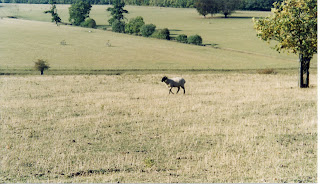

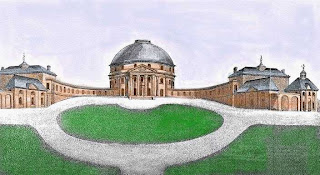
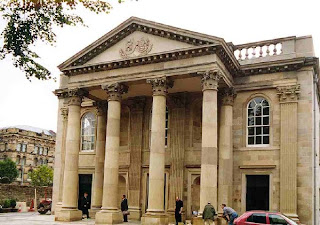


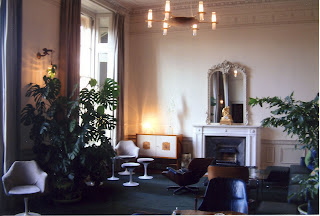
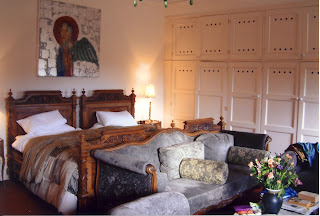


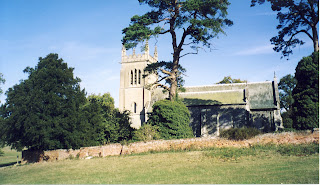

Lovely place. I would love to stay there!
I know I saw it years ago when we lived in Suffolk, but I really don't remember much. For some reason, however, I do remember the fish and chips we got in Bury St. Edmunds on a regular basis! YUM! The best!
I would love to visit Ickworth now that I am old enough to appreciate it.